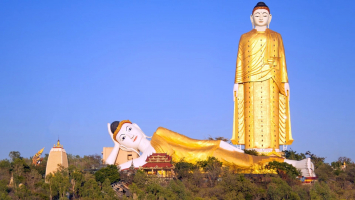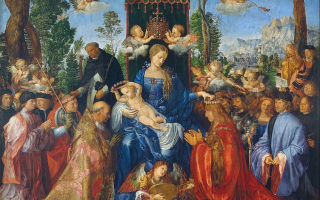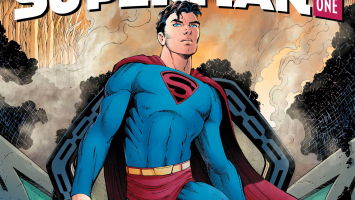Top 10 Different Types Of Buddha Statues And Their Meanings
Buddha statues come in various forms, each carrying distinct symbolism and meaning. These iconic representations hold deep significance in Buddhist traditions ... read more...and are revered for their spiritual essence. Exploring these ten different types of Buddha statues offers a profound insight into the rich tapestry of Buddhist art and philosophy.
-
Protection Buddha - Protection from fear, anger, and delusion
The Protection Buddha, also referred to as the Abhaya Mudra Buddha, embodies a distinct representation of the Buddha statue, symbolizing protection from fear, anger, and delusion. This depiction features the Buddha with his right hand raised, palm facing outward, and fingers extended upwards, known as the Abhaya Mudra, which translates to the "Gesture of Fearlessness."
The raised hand of the Protection Buddha symbolizes the dispelling of fear and the assurance of safety and security. This gesture is a reassuring reminder to his followers, encouraging them to face any external or internal obstacles on their spiritual journey without fear. The Buddha's compassionate presence and profound wisdom provide comfort and guidance, imbuing a deep sense of courage and fearlessness in those who seek solace in his teachings.
The presence of the Protection Buddha statue serves as a potent reminder of the transformative path toward inner peace and freedom from negative emotions and afflictions. It embodies the Buddha's compassionate commitment to safeguard all beings from suffering and ignorance. As practitioners contemplate this image, they are inspired to nurture mindfulness, wisdom, and compassion, surpassing the confines of fear, anger, and delusion, thereby attaining genuine spiritual protection and profound well-being.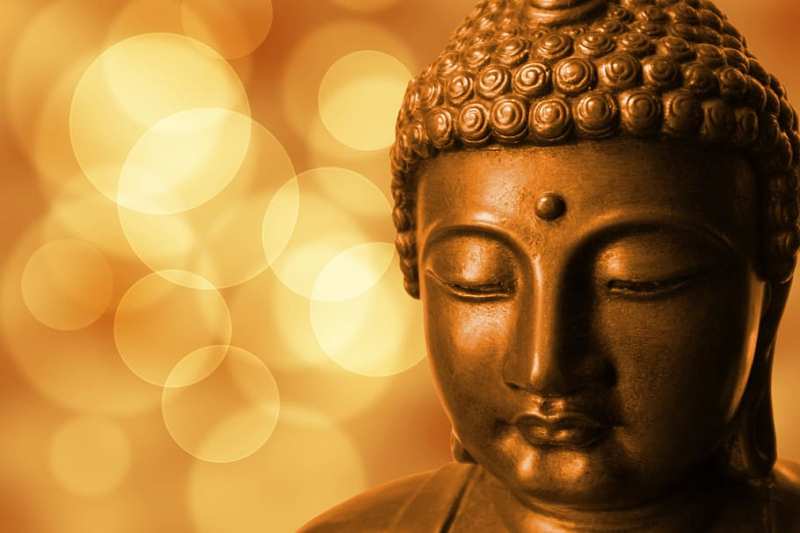
Photo on Pxfuel 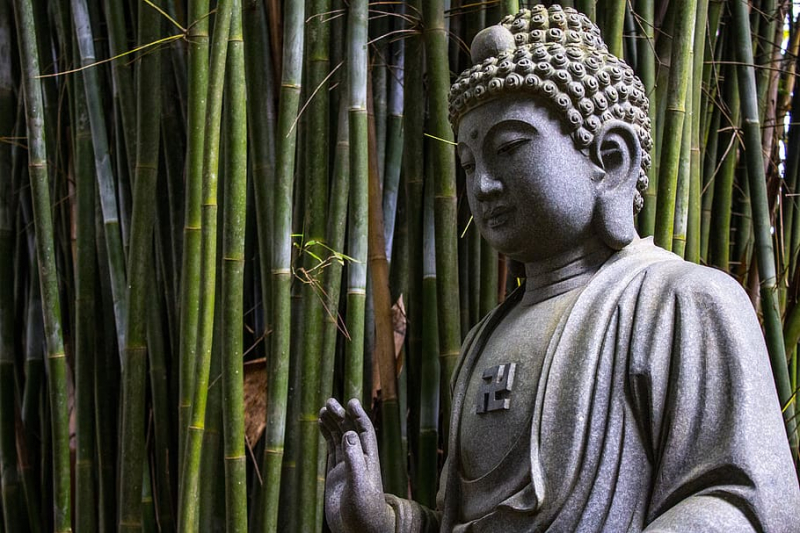
Photo on Pxfuel -
Calming Buddha – Develop Serenity
The Calming Buddha represents a distinct Buddha statue, radiating a serene aura. Typically portrayed in a seated posture, the Calming Buddha assumes the Dhyana Mudra, also known as the Meditation Mudra. Here, the Buddha's hands rest gently in the lap, with the right hand placed atop the left hand, palms facing upwards, and thumbs delicately touching.In this serene pose, the Buddha is depicted deep in meditation, facing forward, with closed eyes and hands resting in the lap. The sitting posture can either be the double lotus pose, with both legs tucked under each other, or the single lotus pose, with one leg gracefully placed over the other. This statue is often employed to create tranquil spaces within one's abode, as it exudes a calming effect on people and facilitates meditation practices.
The Calming Buddha statue is a powerful symbol of peace, stillness, and inner tranquility. It is a constant reminder of the Buddha's profound state of meditation and his unwavering composure amidst life's challenges. Encountering this statue inspires individuals to cultivate inner peace and mindfulness, guiding them toward a harmonious and balanced existence.Through contemplation of the Calming Buddha, practitioners find inspiration to embrace moments of stillness and introspection, fostering a profound sense of calm and clarity amidst life's intricate tapestry. This statue is a potent reminder of the significance of seeking inner peace and serenity, nurturing one's spiritual growth and overall well-being. Its meaningful and soothing presence radiates a sense of tranquility and balance, enriching any space or environment it graces.
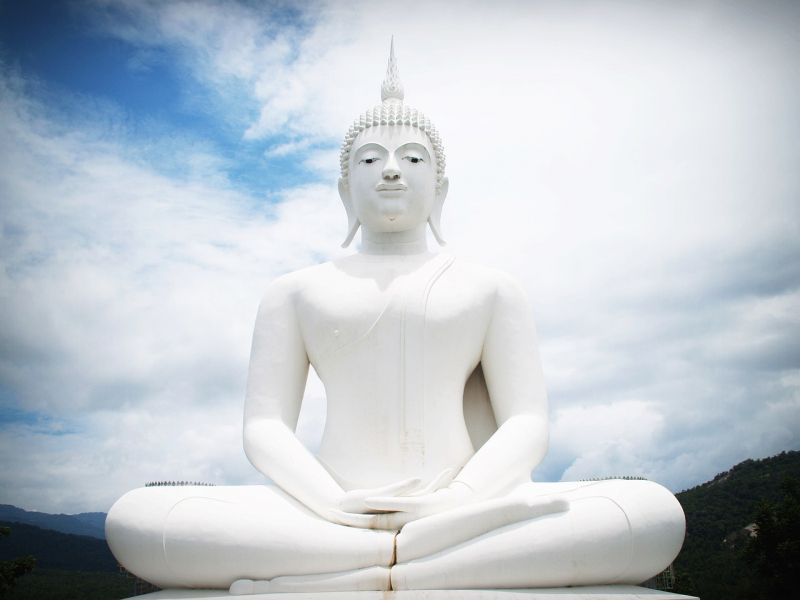
Calming Buddha - Photo on Pixapay (https://pixabay.com/photos/buddha-india-mind-prayer-concept-1550589/) 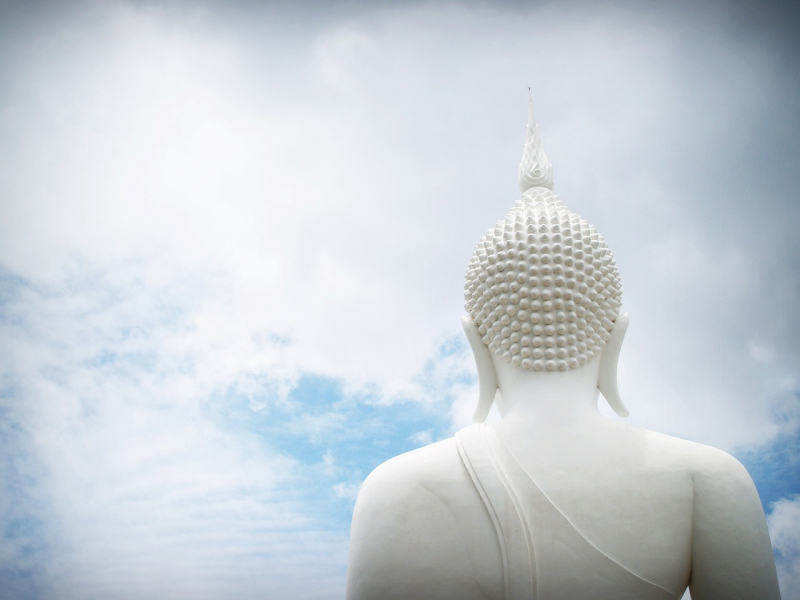
Calming Buddha - Photo on Pixapay (https://pixabay.com/photos/buddha-india-mind-prayer-concept-1550588/) -
Calling the Earth to Witness Buddha – Enlightenment
The "Calling the Earth to Witness" Buddha is a revered depiction that symbolizes the pivotal moment of enlightenment in the life of Siddhartha Gautama, the historical Buddha. This iconic pose is called the "Bhumisparsha Mudra" or the "Gesture of Witness." This immensely significant and mythologized pose captures a pivotal moment in the Buddha's story—the attainment of enlightenment.
This pose relates to the poignant tale of the Buddha's ultimate enlightenment. After six arduous years of meditation, he was on the verge of culture, but Mara, the Demon of Illusion, attempted to deter him. At this critical juncture, the Buddha appealed to the Earth Goddess, who responded by sending forth floods to wash away Demon Mara and all his temptresses. This victorious moment marks the Buddha's enlightenment and liberation from the grip of illusion and desire.
In this representation, the Buddha is depicted in a seated meditation posture, with his right hand touching the ground and the left hand resting peacefully on his lap. This significant gesture symbolizes the moment when the Buddha called upon the earth to bear witness to his enlightenment and triumphant victory over the forces of delusion and ignorance.
The Calling the Earth to Witness Buddha is a potent symbol of awakening and the pursuit of truth. It signifies the Buddha's triumphant liberation from the cycle of birth and death, embodying a profound understanding of existence's nature. This sacred mudra is an inspiring beacon, guiding practitioners on their spiritual journey toward truth, wisdom, and ultimate liberation.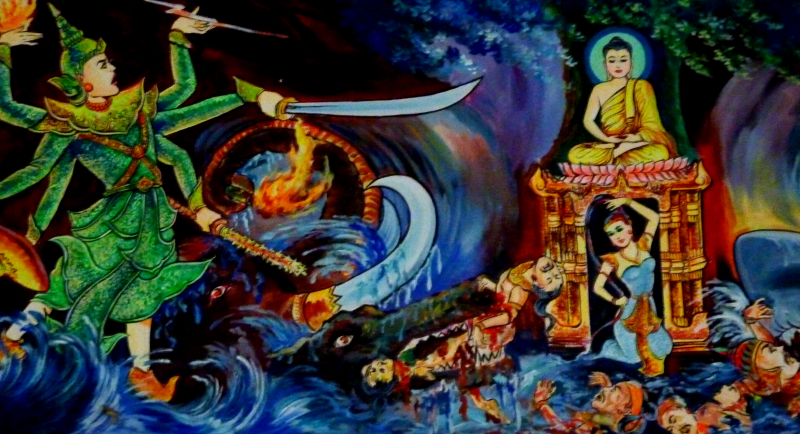
alling the Earth to Witness - Photo on Wikimedia Commons (https://commons.wikimedia.org/wiki/File:040_Calling_the_Earth_to_Witness_%289013210701%29.jpg) 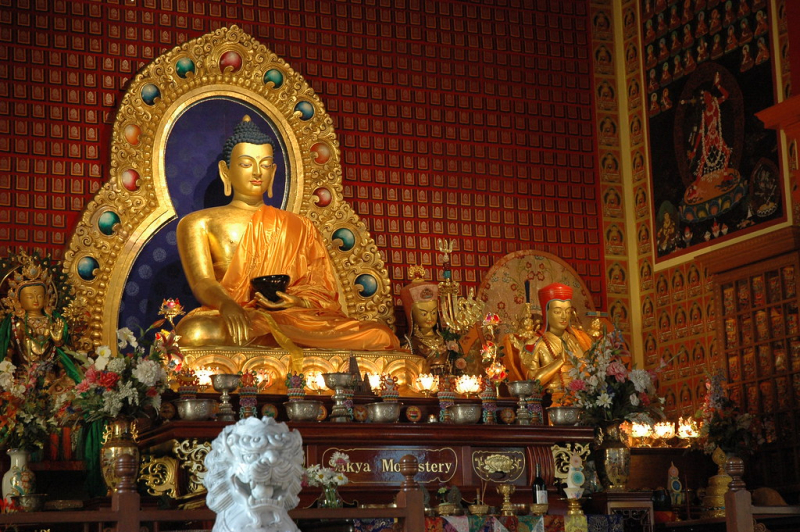
Photo on Flickr (https://www.flickr.com/photos/wonderlane/2697407177) -
The Nirvana Buddha stands as a unique type of Buddha statue, symbolizing the Buddha's achievement of Nirvana—the ultimate state of liberation and enlightenment. In this portrayal, the Buddha is depicted lying on his right side, with his head resting gently on his right hand. This posture signifies the Buddha's entry into Parinirvana, which marks the final passing away of an enlightened being after their physical life.
The Nirvana Buddha statue serves as a poignant reminder of impermanence and the transcendence of suffering, embodying the Buddha's profound liberation from the cycle of birth and death (samsara). It is a powerful symbol of his attainment of ultimate peace and bliss, inspiring contemplation on the path to enlightenment and the cessation of all worldly afflictions.
Frequently employed as a focal point for meditation and contemplation, this Buddha statue prompts reflection on life's impermanence and the transformative journey toward spiritual liberation. It is an inspiring symbol, motivating practitioners to seek freedom from suffering while nurturing wisdom and compassion daily. The Nirvana statue is a solemn and profound representation of the Buddha's ultimate journey towards enlightenment, a powerful reminder of the path to inner peace and transcendence.
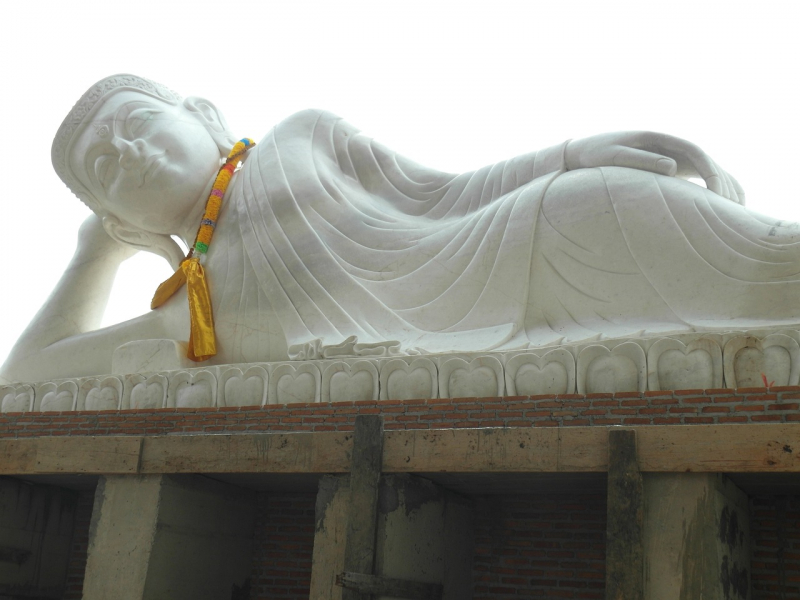
Buddha, Nirvana, Buddhism - Photo on Pixabay (https://pixabay.com/photos/buddha-nirvana-buddhism-2102390/) 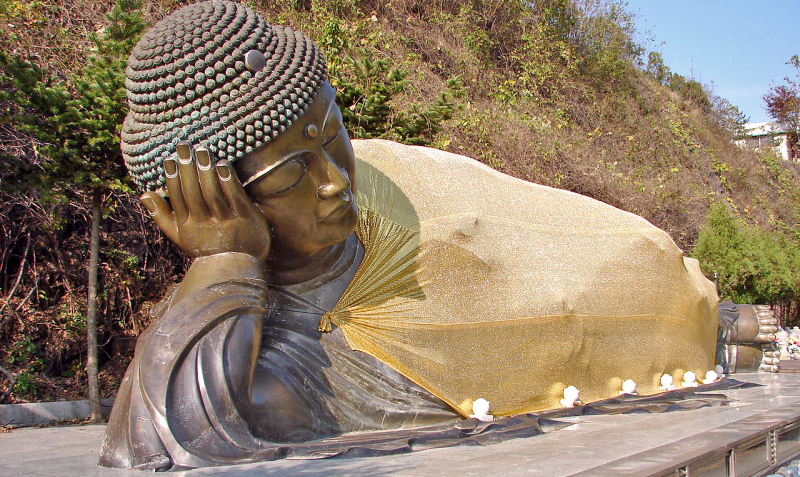
Manbulsa Nirvana statue - Photo on Wikimedia Commons (https://commons.wikimedia.org/wiki/File:Manbulsa_Nirvana_statue,_or_Reclining_Buddha_11-10250.JPG) -
Laughing Buddha – Luck and Prosperity
Representing another facet of Buddha's life during the latter period, the Laughing Buddha exudes joy and contentment, symbolizing prosperity and abundance. Also known as Budai or Hotei, the Laughing Buddha is a distinctive type of Buddha statue, showcasing a jolly and cheerful figure. Unlike the historical Buddha, Siddhartha Gautama, depicted as slim and serene, the Laughing Buddha is often portrayed as a plump, bald man with a big belly and a warm, infectious smile.
The Laughing Buddha is synonymous with happiness, contentment, and abundance, making him a cherished symbol of good luck and prosperity across various Asian cultures. Depicted holding a sack of treasures or a bag of gifts, the statue beautifully represents the wealth and blessings he bestows upon those who encounter his joyful presence.
In Chinese and East Asian traditions, the Laughing Buddha is revered for his ability to bring joy and good fortune to homes and businesses. Often found adorning offices, shops, and houses, his presence is believed to attract positive energy while dispelling negativity. Rubbing the Laughing Buddha's belly is customary to invite good luck and prosperity.
Despite being referred to as the "Buddha," the Laughing Buddha is not a historical Buddhist figure and is not regarded as a deity or enlightened being. Instead, he represents a beloved folkloric figure, widely embraced in various cultures as an emblem of happiness and well-being.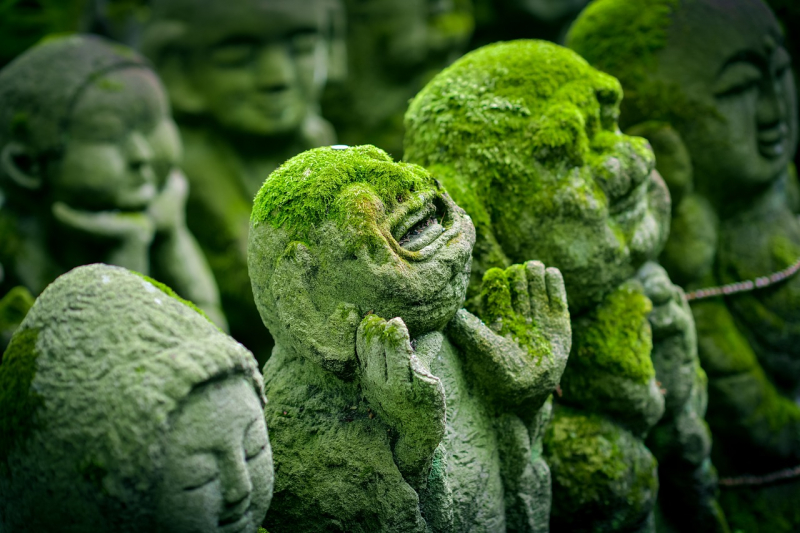
Kyoto Japan Statue - Photo on Pixapay (https://pixabay.com/photos/kyoto-japan-statue-jizo-japanese-1976538/) 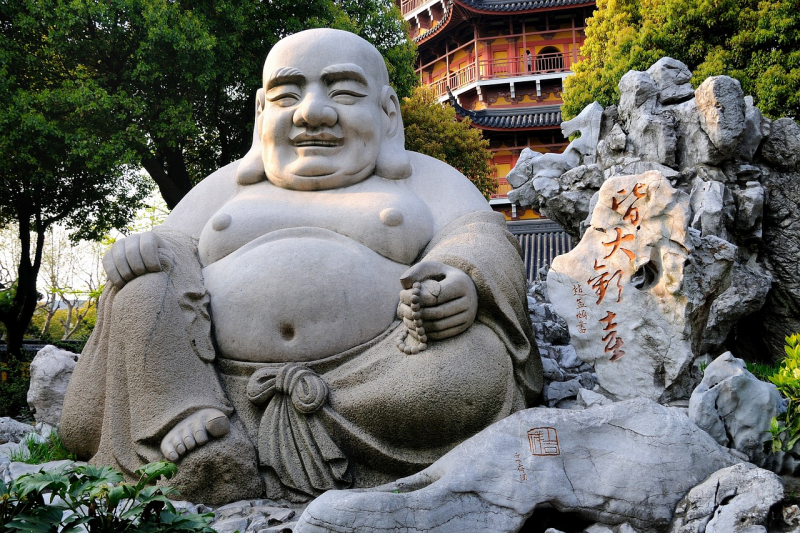
Laughing buddha, Statue, China - Photo on Pixabay (https://pixabay.com/photos/laughing-buddha-statue-china-1876038/) -
The DharmaChakra Buddha, a distinctive type of Buddha statue, carries profound symbolism as it represents the Buddha's inaugural sermon known as the "Turning of the Wheel of Dharma." This momentous event occurred at Deer Park in Sarnath, India, after the Buddha attained enlightenment.
In this portrayal, the Buddha assumes a seated posture, with both hands forming the revered DharmaChakra Mudra. In this mudra, each hand's index finger and thumb gently touch, creating a circle, while the other fingers extend upward. This symbolic gesture signifies the initiation and motion of the Wheel of Dharma, embodying the essence of the Buddha's teachings and the path toward liberation.
The DharmaChakra Buddha statue is a potent reminder of the Buddha's boundless compassion, profound wisdom, and unwavering dedication to guiding others toward enlightenment. It represents the foundation of Buddhist teachings, embodying the essential principles that pave the way for the cessation of suffering and the realization of ultimate truth.
This Buddha statue is revered as a profound symbol of the spiritual journey and the path to awakening. It finds its place of honor in temples, monasteries, and meditation spaces, where it serves as a source of inspiration for practitioners, kindling their pursuit of wisdom, understanding, and inner peace.
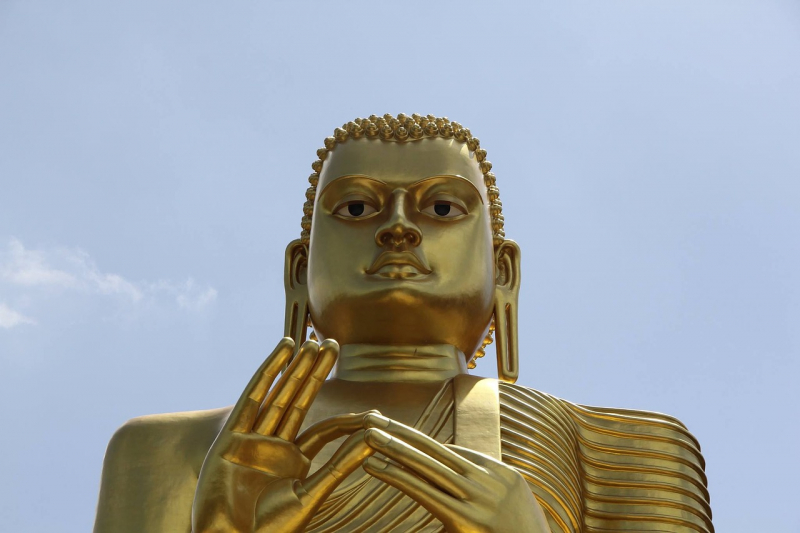
Photo on Needpix.com (https://www.needpix.com/photo/721287/sri-lanka-meditation-buddhism-meditate-asia-religion-divinity-buddhist-travel) Video by BDG: Buddhistdoor Global -
The Medicine Buddha, revered as Bhaisajyaguru, embodies a distinct type of Buddha statue that symbolizes the healing aspect of the Buddha's teachings. Bhaisajyaguru translates to "Master of Healing and Medicine" in Sanskrit, emphasizing his role as a compassionate healer and guide on well-being.
In this representation, the Medicine Buddha exudes a serene and compassionate demeanor, seated in a meditative pose. One of his hands gently holds a medicinal bowl brimming with healing herbs, while the other hand carries a sprig of the Myrobalan plant, believed to possess potent medicinal properties.
The Medicine Buddha is closely connected with the practice of healing and holds reverence for his profound ability to alleviate physical, mental, and spiritual afflictions. His teachings revolve around the significance of compassion, wisdom, and recognizing the interdependence among all living beings.
The Medicine Buddha statue is frequently present in hospitals, clinics, and spaces dedicated to healing practices, serving as a potent symbol of hope and the possibility of inner and outer healing. Meditation with the Medicine Buddha is believed to invoke healing energies and support the well-being of the practitioner and those seeking recovery.

Bhaisajyaguru Shrine - Photo on Wikimedia Commons (https://commons.wikimedia.org/wiki/File:010_Bhaisajyaguru_Shrine_%2824267038187%29.jpg) Video by adeline108 -
The Walking Buddha signifies Grace and Inner Beauty
The Walking Buddha is a distinctive type of Buddha statue that portrays the Buddha in a dynamic walking or standing posture. In contrast to the more prevalent seated Buddha statues, the Walking Buddha is depicted with one foot gently advanced, symbolizing the Buddha's active movement and journey in disseminating his profound teachings.
In this portrayal, the Walking Buddha is often depicted with one hand raised in the gesture of fearlessness (abhaya mudra), instilling courage, and the other hand lowered with the palm facing outward (varada mudra), symbolizing boundless compassion and the bestowal of blessings.
The Walking Buddha statue embodies the dynamic aspect of the Buddha's life, symbolizing his unwavering dedication to assist and guide others on their journey towards enlightenment. It vividly represents the active nature of the Buddha's teachings, as he tirelessly walked from place to place, graciously imparting his wisdom and boundless compassion to all sentient beings.
The Walking Buddha statue is deeply revered for its profound symbolism, representing the Buddha's boundless compassion, fearlessness, and unwavering dedication to guiding sentient beings toward liberation. It stands as a constant reminder of the significance of taking proactive steps on the path of spiritual growth and the imperative to share wisdom and enlightenment with all beings across the globe.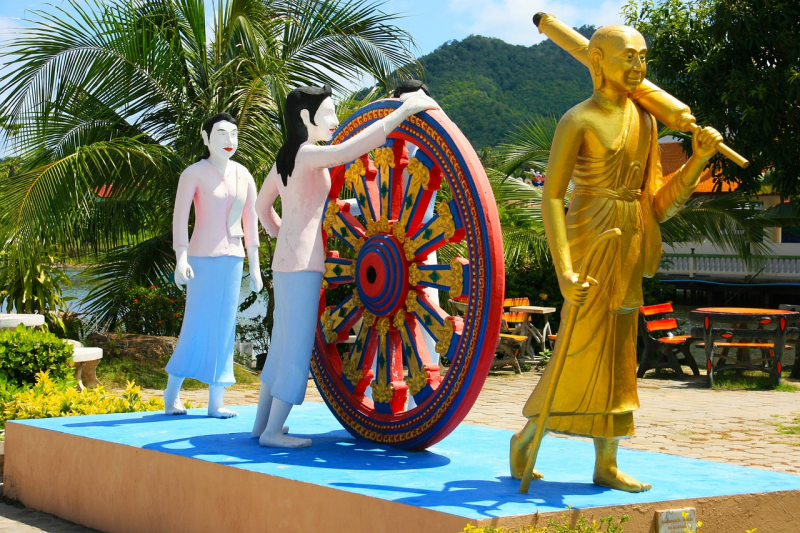
Walking Buddha - Photo on Pixabay (https://pixabay.com/photos/buddha-whee-karma-walking-gold-993855/) 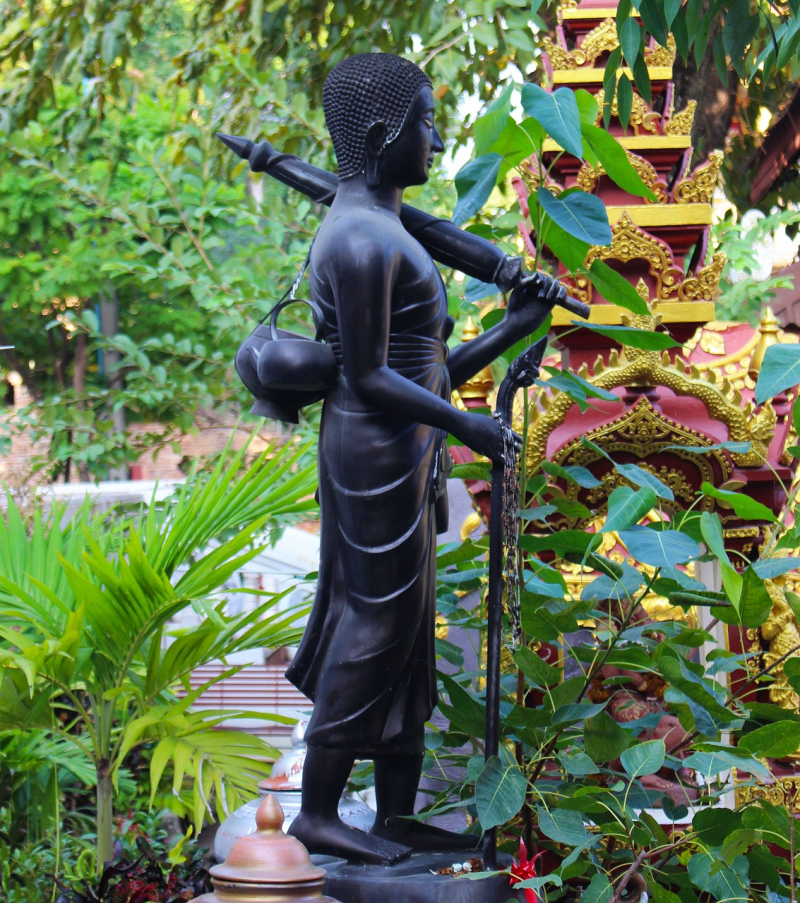
Walking Buddha - Photo on Pixabay (https://pixabay.com/photos/sculpture-buddha-religion-buddhism-1910991/) -
Contemplation Buddha signifies Patience and Understanding
The Contemplation Buddha, a specific type of Buddha statue, epitomizes the virtues of Patience and Understanding as it portrays the Buddha in deep meditation, embodying these profound qualities.
In this representation, the Buddha assumes a serene seated posture with closed eyes and hands forming various mudras, symbolizing inner contemplation and profound peace. This statue is a potent reminder of the significance of cultivating patience and understanding along one's spiritual journey.
With its tranquil and composed presence, the Contemplation Buddha inspires practitioners to cultivate patience amidst life's challenges and explore a deeper understanding of the nature of reality and human experience. This statue symbolizes the art of contemplation and mindfulness, encouraging individuals to nurture inner calm and wisdom along their spiritual journey.
This type of Buddha statue holds deep reverence in meditation spaces, temples, and spiritual centers, as it captures the essence of the Buddha's journey to enlightenment. The Contemplation Buddha is an inspiring symbol, motivating practitioners to embrace the transformative practice of meditation, embarking on a path toward inner peace and profound wisdom. It symbolizes the serene state of mind and the quest for higher consciousness through inner contemplation.
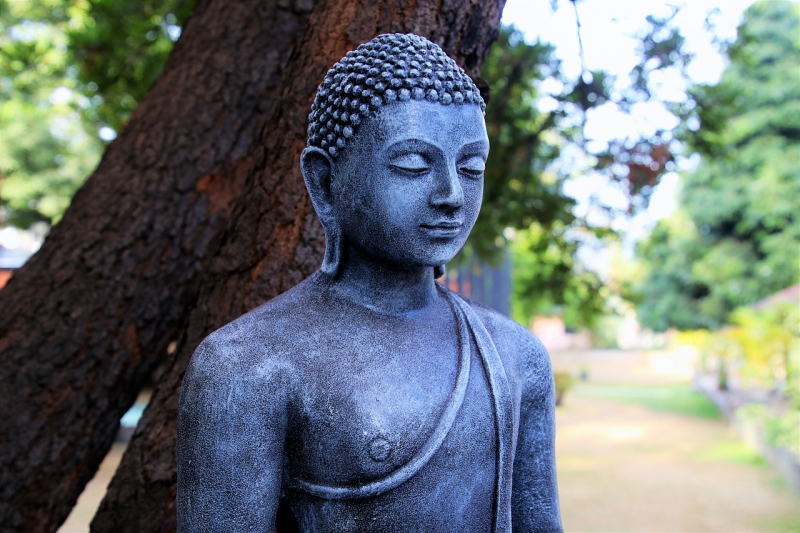
Contemplation Buddha - Photo by Pixapay (https://pixabay.com/photos/buddhism-portrait-sculpture-tree-3207277/) Video by Ajahn Punnadhammo -
Amithaba Buddha, commonly known as Amitabha, is a specific type of Buddha statue symbolizing the Buddha of Infinite Light and Infinite Life. Amitabha is central to Pure Land Buddhism, a significant Mahayana Buddhist tradition.
In this portrayal, Amithaba Buddha is frequently depicted in a seated posture, with both hands forming the Dhyana Mudra, also known as the Meditation Mudra. This mudra showcases the Buddha's hands resting in the lap, with the right hand gently placed on top of the left hand, palms facing upwards, and thumbs lightly touching.
Amithaba Buddha is revered as the presiding deity of the Pure Land, a realm of enlightenment and bliss where beings can attain rebirth after death by sincerely reciting his name with unwavering faith and devotion. Devotees aspire to be reborn in Amitabha's Pure Land, seeking to progress toward enlightenment under his compassionate and guiding presence.
Statues of Amithaba Buddha hold a cherished place of reverence in Pure Land Buddhist temples and centers. They are visual reminders of Amithaba's boundless compassion and unwavering vow to guide all beings toward liberation. These sacred images inspire devotees to recite Amithaba's name and nurture a pure and sincere heart, aspiring to attain rebirth in the Pure Land and advance to enlightenment.
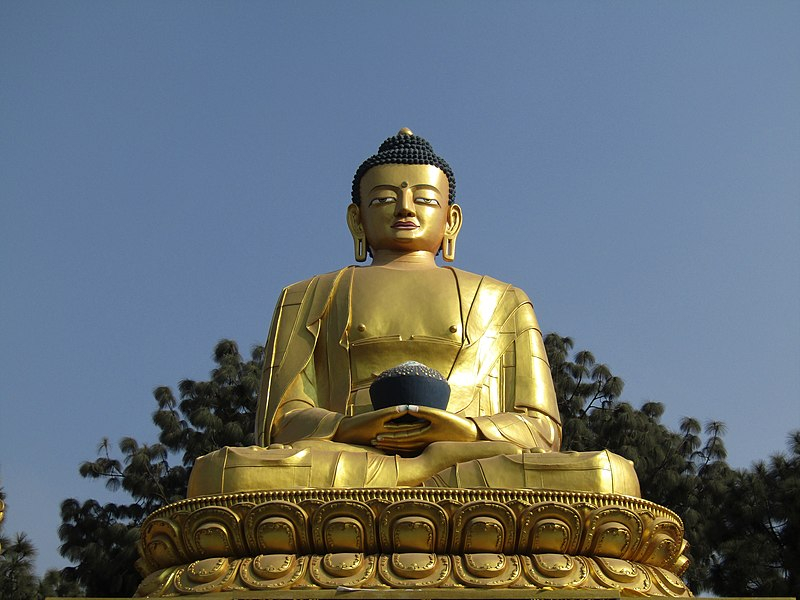
Amithaba Buddha - Photo on Wikimedia Commons https://commons.wikimedia.org/wiki/File:Amitabha_Buddha.jpg) Video by Amazing Things in Vietnam













